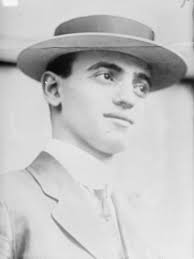The Leo Frank Case: A Turning Point in American History

Introduction
The case of Leo Frank stands as a pivotal moment in American history, highlighting the dangers of societal prejudice and miscarriages of justice. Frank, a Jewish factory manager in Atlanta, was convicted in 1913 for the murder of 13-year-old Mary Phagan. His trial and subsequent lynching in 1915 exposed deeply rooted anti-Semitism and racial tensions in the United States during the early 20th century. Understanding this case is essential for acknowledging how far prejudice can infiltrate legal proceedings, as well as the need for vigilance against injustice.
Background of the Case
On April 26, 1913, Mary Phagan was found murdered in the basement of the National Pencil Company, where Leo Frank was the manager. Frank’s involvement in the case stirred controversy from the outset, fueled by sensationalist media coverage that targeted his Jewish identity. Despite the lack of concrete evidence, Frank was arrested, and his trial drew widespread attention.
The prosecution presented flimsy evidence, relying heavily on the testimony of Jim Conley, a factory worker with a questionable credibility, who claimed to witness Frank disposing of Mary’s body. The jury’s decision, influenced by the fervent public opinion and rising anti-Semitic sentiment in the South, led to a guilty verdict on August 25, 1913.
Lynching and Aftermath
After spending two years on death row, Frank’s case was taken up by prominent figures advocating for his innocence, including civil rights activist and journalist W.E.B. Du Bois. However, the fervor against him culminated in the late-night lynching of Frank by a mob on August 17, 1915, in Marietta, Georgia. This shocking event not only illustrated the extent of racial and religious intolerance but also marked a tragic conclusion to a flawed judicial process.
Legacy and Significance
The Leo Frank case had far-reaching consequences. It ignited the resurgence of the Ku Klux Klan, who thrived on the anti-Semitic sentiments the case had exposed. Additionally, Frank’s wrongful conviction brought to light the need for criminal justice reforms and highlighted the systemic failures in how minorities were treated in the legal system.
In 1986, he was posthumously pardoned by the Georgia State Board of Pardons and Paroles, recognizing the severe miscarriages of justice he suffered during the trial. The case remains a reminder of the biases that can taint judicial processes and the importance of safeguarding against such acts of hatred.
Conclusion
Today, the Leo Frank case serves as a critical touchstone in discussions about justice, prejudice, and the impact of societal values on legal outcomes. As contemporary America continues to grapple with issues related to discrimination and fairness in the judicial system, revisiting cases like Leo Frank’s is essential for understanding the historical context and inspiring efforts towards a more just society. The lessons learned from Frank’s tragic story highlight the ongoing need for vigilance against anti-Semitism and all forms of intolerance.






